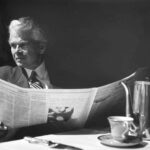Comsonics is a tech corporation currently working on a new device for law enforcement that could monitor driver’s texting habits while on the road by sending radio signals to their targets.
In the same way, a police officer uses a radar gun, this device would “peek” into the signal emitted by the driver’s cell phone and differentiate whether the driver was texting or making a call while driving.
Consonics “is a national and international electronics manufacturer and services firm” providing “certification”, radar, lidar and other equipment to police departments.
At the 2014 Distracted Driving Summit (DDS) Malcolm McIntyre told the audience about “the company’s move into texting detection”.
McIntyre explained that “[the device] is close to production [however there are] several hurdles to clear, including legislative approval and adoption by law enforcement. There are also privacy concerns. The equipment cannot decrypt the information that is transmitted by drivers.”
Currently, police departments surveil drivers by recording license plate numbers as drivers pass by to strengthen their information databases without foreknowledge by the public.
In fact, nearly 600 local and state police departments in 38 states across America, including the District of Columbia, are participating in this scheme.
Millions of digital records have been amassed using this system that gives enforcement agencies the ability to locate any car at any time. The scanners are able to “capture images of passing or parked vehicles and note their location, uploading that information into police databases. Departments keep the records for weeks or years, sometimes indefinitely.”
Using automatic license plate readers (ALPR) surveillance technology, there is a clear and “startling picture of a technology deployed with too few rules that is becoming a tool for mass routine location tracking and surveillance.”
More disturbing is that “private companies are also using license plate readers and sharing the information they collect with police with little or no oversight or privacy protections. A lack of regulation means that policies governing how long our location data is kept vary widely.”
High-speed cameras are used in conjunction with software to analyze photographs wherein license plate numbers are retrieved. The data is compared to “hot lists” of plate numbers and produces an instant alert when a match, or “hit,” registers.
Hot list information is gathered from the National Crime Information Center (NCIC).
This enables the enforcement industry to create “s police to create “a single, high-resolution image of our lives.”
The Portland City police department (PCPD) has joined with those agencies that are tracking drivers and recording license plates.
The PCPD has 16 cameras attached to their cars that are armed to work with the surveillance software and database network.
Sargent Pete Simpson of the Portland Police Bureau explained that the PCPD has “scanners on patrol cars for several years. He said police use the scanners to alert officers if a car is stolen or if the owner of the car has a warrant for their arrest.”
The PCPD retains “the data for a minimum of 30 days and a maximum of 40 years. The data is also only accessible by police.”











